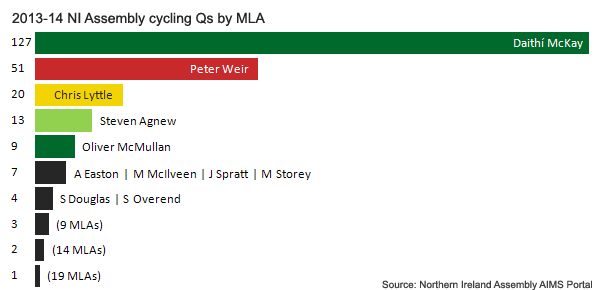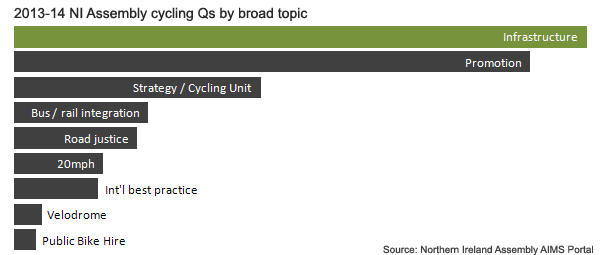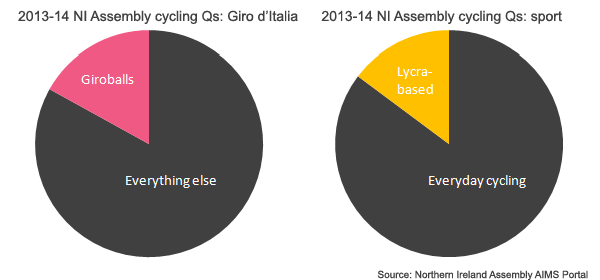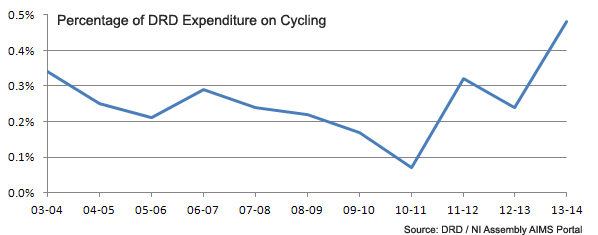
You can vote now in the 2014 Fréd Awards! Over the next week we’ll bring you the stories behind the short lists and those who have been nominated. We start with Cycling politician of the year..
The runners and riders
Danny Kennedy
A sceptical public took the Regional Development Minister’s call for a Cycling Revolution™ in Northern Ireland with a pinch of salt – what good is a promise without actions?
And then came the first signs of action in 2014. A Departmental Cycling Unit was set up with staff, an annual budget and plans for infrastructure funding..
DRD Cycle Unit: annual cycling budget of £7.5m by 2016/17 would move NI on from 58p p/person p/year to around £4 #goodstart
— NI Greenways (@nigreenways) February 6, 2014
The Minister got his hands dirty and took in a tour of Copenhagen and Malmö to see how cycling can made mainstream, and help to create better places to live..
Glory be! NI Cycling Minister Danny Kennedy on a cycle study tour of Copenhagen 🙂 #CyclingREVOLUTION http://t.co/YQLkSLEbbt
— NI Greenways (@nigreenways) March 6, 2014
@Bikeshopbelfast @nigreenways And this just in! MT “@malmostad: NI Danny Kennedy on guided bicycle tour in malmö. pic.twitter.com/jlZGFAyS5D”
— Manne Gerell (@ManneGerell) March 7, 2014
Why did our Minister visit Copenhagen & Malmö to study cycling, not Netherlands? Hang on.. #TheBridge pic.twitter.com/x4BR05taH6
— NI Greenways (@nigreenways) March 12, 2014
Not content with getting on his bike in safe environments, the Minister joined Ride On Belfast and even showed an impressive kick to lead out, then drop, the peloton though the rush hour streets of Belfast..
#RideOnBelfast Grand Départ 2014 -that's our Transport Minister leading a decisive early breakaway 🙂 http://t.co/0eplpjSTas
— NI Greenways (@nigreenways) June 20, 2014
In October the Minister hosted the Changing Gears international cycling conference in Belfast. Delegates expecting a typical Ministerial appearance (photo, speech, out the door) were impressed by Danny’s engaged attendance through the whole day, his target-laden key-note speech and wrap-up..
Kennedy "My ambition for NI is to be UK's cycling capital & the cycling capital on this island" #NIChangingGear pic.twitter.com/Gdo6Rp024V
— NI Executive (@niexecutive) October 16, 2014
An impressive year from a politician who is working from no party manifesto commitment to cycling and operating in a space which can easily draw criticism from lobbies hostile to cycling.
Chris Lyttle
Chris has been instrumental in setting up the All Party Group on Cycling at the Northern Ireland Assembly, which he chairs.
Cycling debate @niassembly: @Chris_Lyttle on investment & political leadership http://t.co/d4vuUAw2Ly pic.twitter.com/EMBo7OV4rU
— NI Greenways (@nigreenways) April 29, 2014
In this role Chris helped to organise a number of events in 2014 including an APG round table discussion on how to get NI cycling, and a cycling safari with the DRD Cycling Unit, Travelwise and local cycling campaigners..
MLA Cycle leaving @niassembly for City Centre to launch Bike Week 2014 #GetNICycling @nigreenways pic.twitter.com/Iccsw1gvdI
— Chris Lyttle (@Chris_Lyttle) June 12, 2014
Chris has recently moved on to the Regional Development Committee to (among other things) ensure a strong voice for cycling and as the sole MLA representing Belfast constituencies, epicentre of the Cycling Revolution™..
@stevenpatt99 @nigreenways look forward to advocating for active travel & cycling in particular #getnicycling
— Chris Lyttle (@Chris_Lyttle) October 4, 2014
Máirtín Ó Muilleoir
Former Lord Mayor of Belfast Máirtín Ó Muilleoir is the defending champion in this category..
Congrats to defending @thefredfestival Cycling Politician of the Year @newbelfast on his way to Stormont 🙂 pic.twitter.com/vKyJH59TsF
— NI Greenways (@nigreenways) October 22, 2014
Máirtín’s time in office was a breath of fresh air in many ways, and he unexpectedly embraced cycling over the course of an impressive year. The appearance of a Mayoral bicycle was complemented by a Giro-rosa hi-viz tabard to give a distinctive appearance around the streets of Belfast – indeed Máirtín took to arriving at Mayoral appearances by bicycle..
On the rothar in the Giro pink @sustrans @nigreenways pic.twitter.com/sncMyeJR34
— Máirtín Ó Muilleoir (@newbelfast) January 14, 2014
And of course, with the Giro d’Italia in town during 2014, what else would Belfast’s First Citizen do but dye his hair Giro-rosa for the week?
Well done on the pink hair Lord Mayor @newbelfast . Great atmosphere at Giro launch in Belfast. @DiscoverNI pic.twitter.com/rEUMVAnxZe
— Niall Gibbons (@NiallGibbons) May 8, 2014
Máirtín has now left Belfast City Council to represent South Belfast at the Northern Ireland Assembly. While the bike may not be heading up Massey Avenue too often, we hope Máirtín will take his new found delight in cycling with him.
Daithí McKay
Daithí has already landed the first Fréd Award of 2014, as the Cycling MLA of the Year for asking the most NI Assembly questions on cycling..
Stormont cycle debate: @daithimckay on road design impact on health outcomes http://t.co/d4vuUAw2Ly pic.twitter.com/4NXS6ZnUen
— NI Greenways (@nigreenways) April 30, 2014
You can read more about Daithí’s achievements here, but his work goes beyond the halls of Stormont..
https://twitter.com/MisssPatrice/status/496371445694730240
A prominent member of the All Party Group on Cycling, Daithí also has a real passion for leisure cycling and commuting – no mean feat as his constituency is about 50 miles from Stormont..
https://twitter.com/daithimckay/status/462351690499629056
Although that would be a some daily round trip – this multi-modal commuter makes good use of Translink’s bicycle area..
https://twitter.com/daithimckay/status/478766402829295616
Can Daithí do a unique double at this year’s Fréd Awards? That’s up to you, the voting public..
Sandra Overend
Sandra put herself to the fore of the political discussions on cycling in 2014. After becoming Assembly Private Secretary to Danny Kennedy, Sandra has been a valued member of the All Party Group on Cycling and made an important contribution to the NI Assembly debate on a Giro Legacy for cycling..
Cycling debate @niassembly: @over2sandra on kick-starting a cycling revolution http://t.co/d4vuUAw2Ly pic.twitter.com/1sHFRoG89l
— NI Greenways (@nigreenways) April 29, 2014
Bike Week brought opportunities for MLAs to go on a cycling safari from Stormont to Belfast City Hall and back again, where Sandra and others diced with busy lunchtime traffic to get a real experience of the issues for everyday cyclists..
Assessing City Centre cycling infrastructure with fellow @APGcycling member @over2sandra #GetNICycling pic.twitter.com/3z2Gr3Wri6
— Chris Lyttle (@Chris_Lyttle) June 12, 2014
And Sandra continues to work closely with the Minister and the DRD Cycling Unit to assess the problems for cycling in Northern Ireland..
Overend and DRD Cycling Unit assess difficulties faced by Belfast cyclists http://t.co/cguwZSCLyE @over2sandra #UUP pic.twitter.com/uY9TDcwaPO
— Ulster Unionist Party (@uuponline) July 11, 2014
Pat Ramsey
Pat’s inclusion in the short list for Cycling politician of the Year 2014 might raise eyebrows for those with long memories, but he’s here on merit for some impressive and largely unheralded work during the year..
.@Patramseymla believes '20 is plenty' scheme can save lives. http://t.co/3WOxowZv5R
— The SDLP (@SDLPlive) February 5, 2014
Pat picked up where Conall McDevitt left off in 2013 by resurrecting the Private Member’s Bill to make 20mph the default speed on residential roads in Northern Ireland..
NI to consider bill for all restricted roads to be 20mph with exceptions. Well done MLA Pat Ramsey @Patramseymla http://t.co/XxMTPXi1Nb
— 20's Plenty for Us (@20splentyforus) December 10, 2013
The progress of the Bill will be interesting to watch in 2015.
John Barry
John’s bid for election to the new North Down & Ards District Council was unlike many others in the 2014 elections – the Battle Bike was key in his effort to meet potential voters..
https://twitter.com/CllrJohnBarry/status/469407008769458177
After suffering previous disappointments, the bicycle strategy along with his trademark personalised hi-viz tabard saw him romp home.
Here's the pic I snapped of @CllrJohnBarry trundling the @duncan_morrow route! Outside @sinnamon_coffee pic.twitter.com/mqOOLdaKfz
— Brian John Spencer (@brianjohnspencr) October 17, 2014
Not content with putting the bicycle front and centre in the electoral process, John took part in the inaugural Fréd Debate during Bike Week. He valiantly argued for the motion that “Belfast can never become a cycling city”, failing to convince the house (and himself) in the face of his former QUB student Thomas McConaghie’s passion and logic..
[youtube https://www.youtube.com/watch?v=FdD4s7rfxdo?rel=0]
Sammy Douglas
Sammy is another politician who’s a genuine everyday bicycle user for many reasons – for health, for quick journeys, or just for the love of it..
We guess its safe to say that @sammydouglasmla is the MLA who makes most trips by bike. #activebelfast pic.twitter.com/kHlKMvq0Va
— Sustrans in Northern Ireland (@SustransNI) March 28, 2014
Cycling isn’t just about commuting, leisure, shopping or racing – it’s an important tool of social cohesion. Sammy’s work with the Ballybeen Men’s Group shows the benefits active travel can have in disadvantaged communities in Belfast..
Great night with the budding bike mechanics at Ballybeen Mens Motivational Group. @sammydouglasmla @cllrjohnkyle pic.twitter.com/sGorMbq91j
— Sustrans in Northern Ireland (@SustransNI) May 15, 2014
Although we think this Tweet might be shameless politicking by Sammy – a picture of his bicycle with a cat in the middle of Fréd Awards season?! A canny politician at heart..
https://twitter.com/sammydouglasmla/status/534009990580019200
Give your favourite cycling politician (from this list or your own choice) a vote in the 2014 Fréd Awards now!

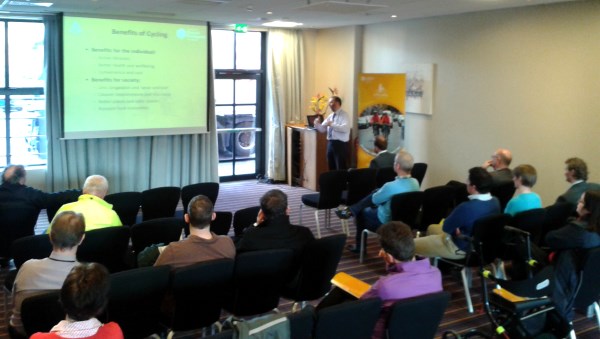

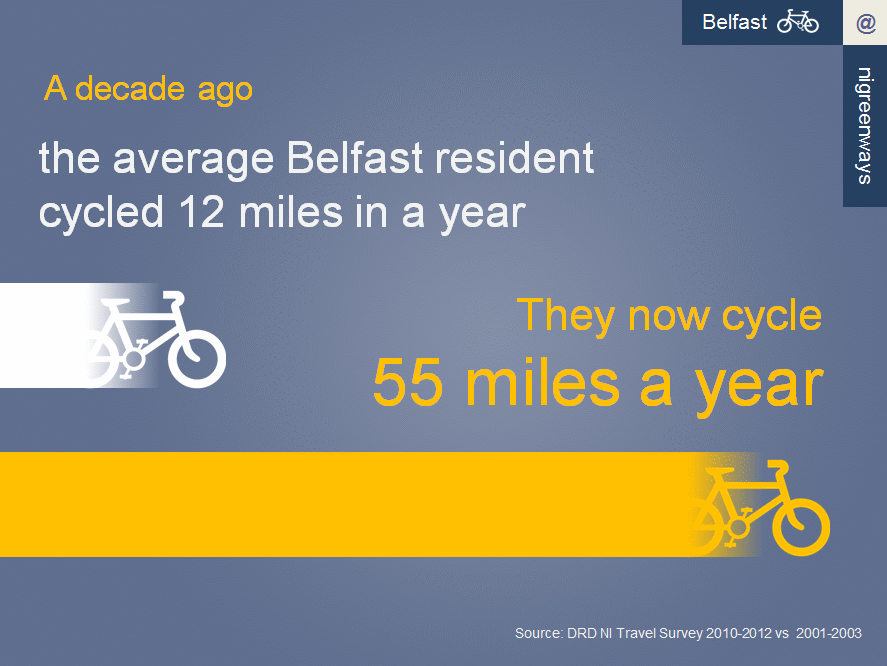

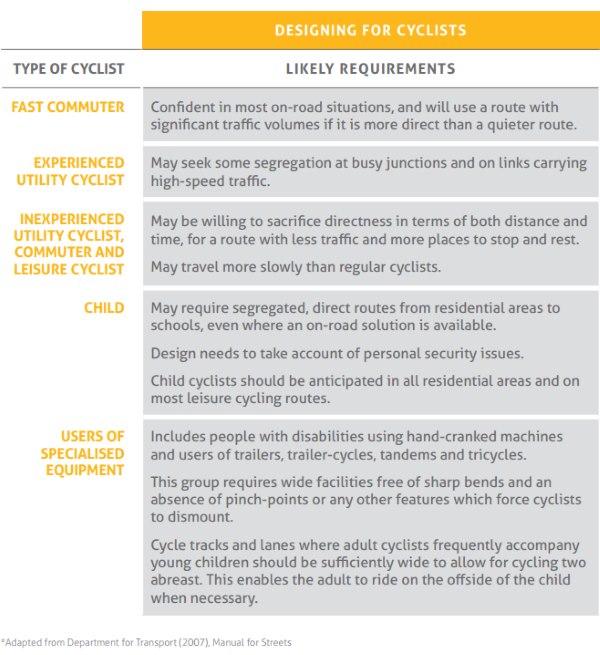

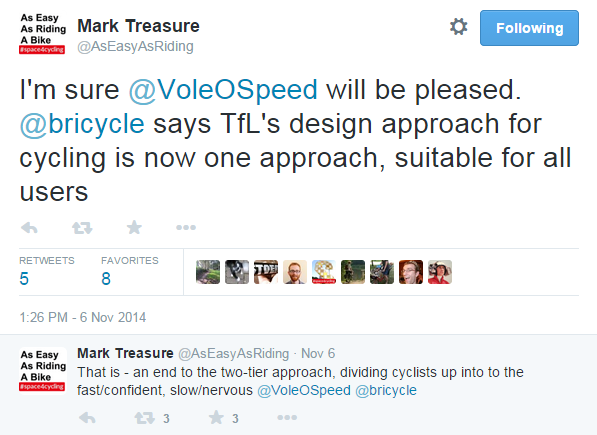
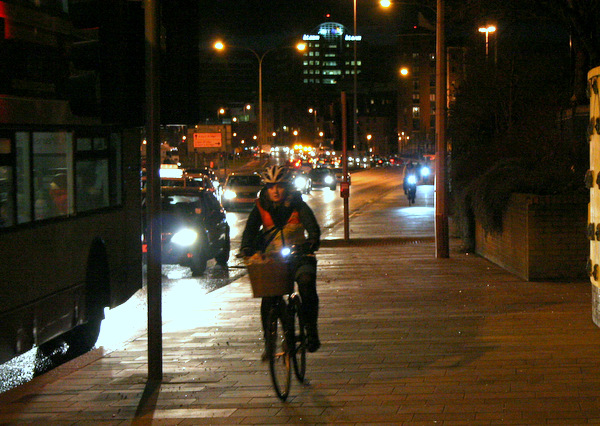
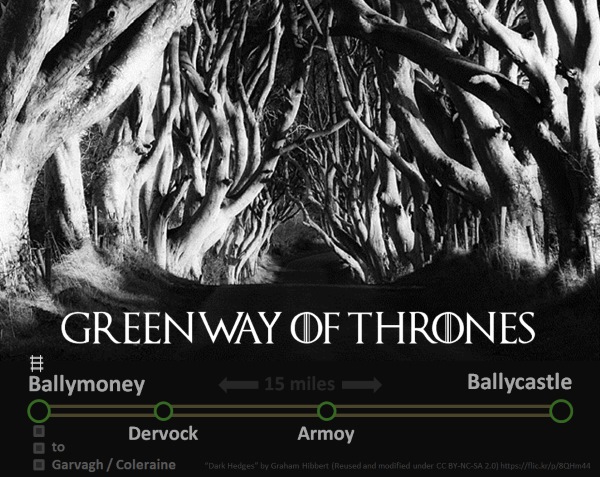
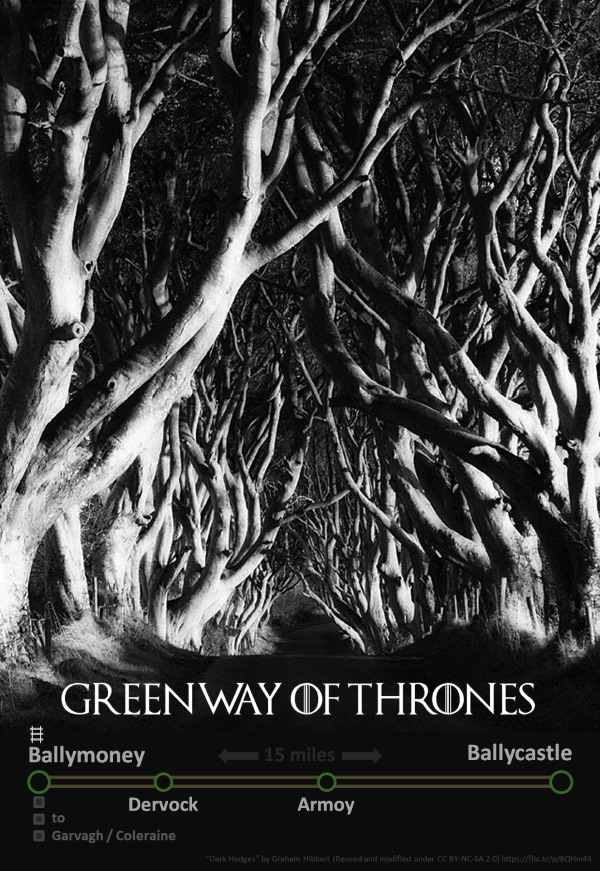















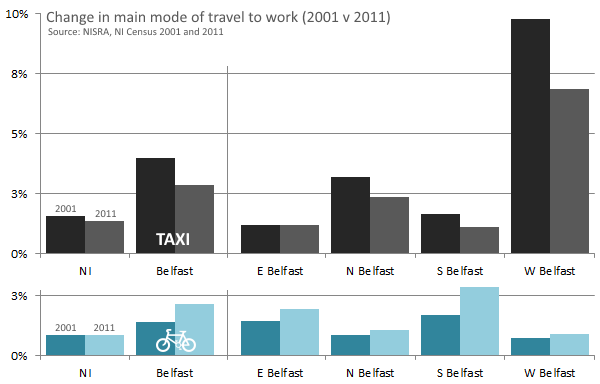
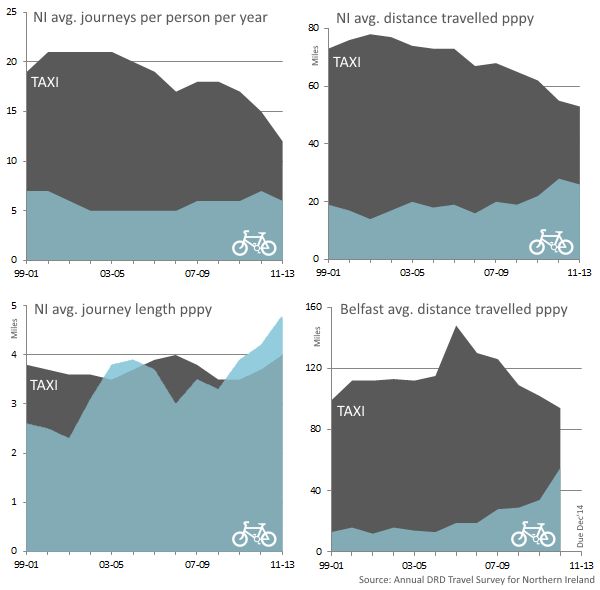
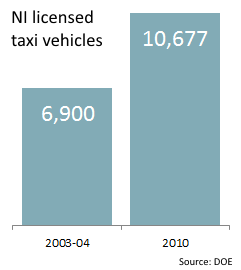
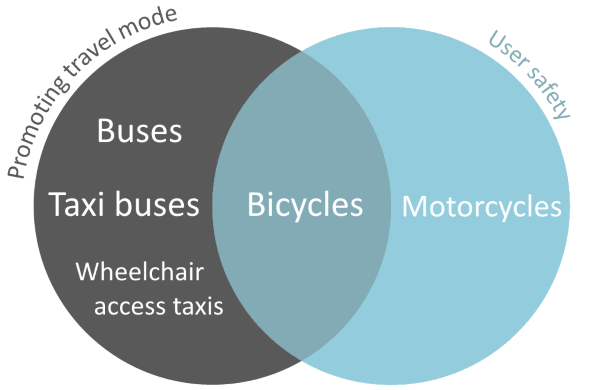
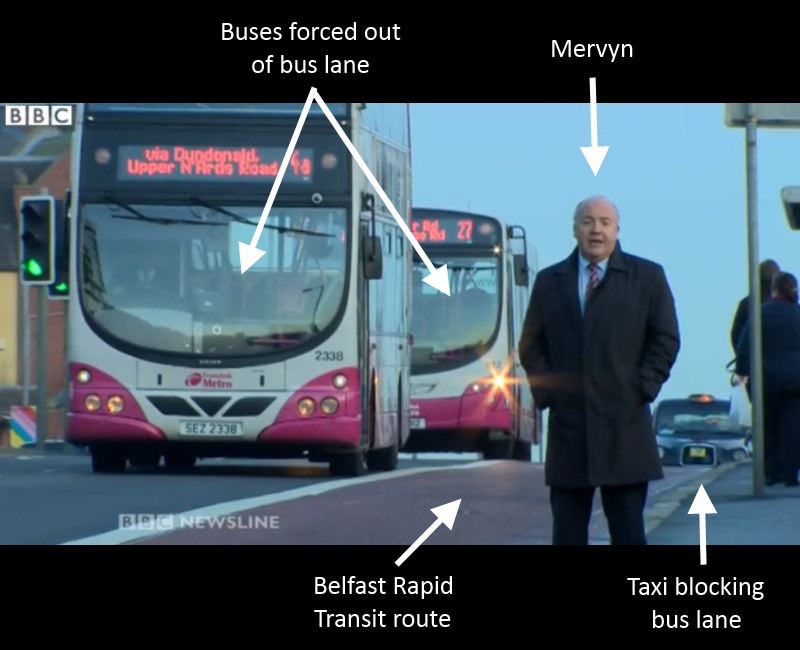

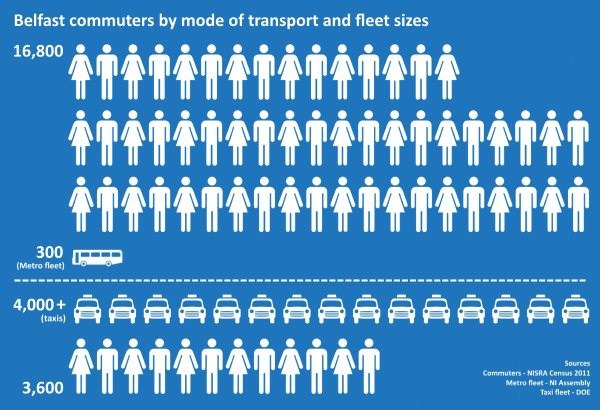
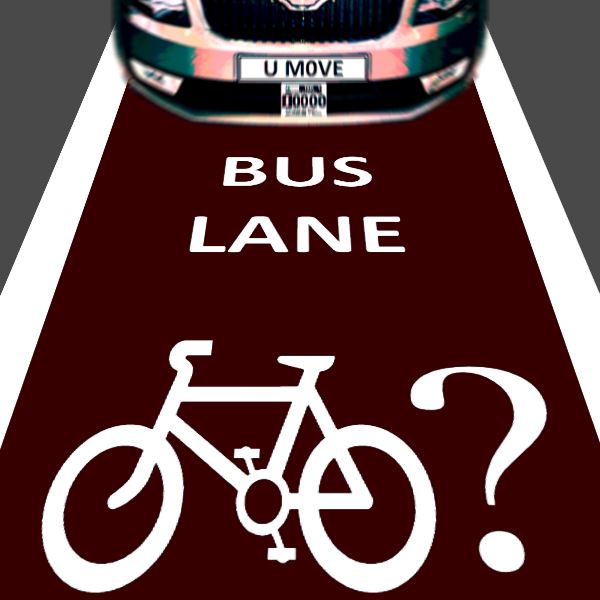
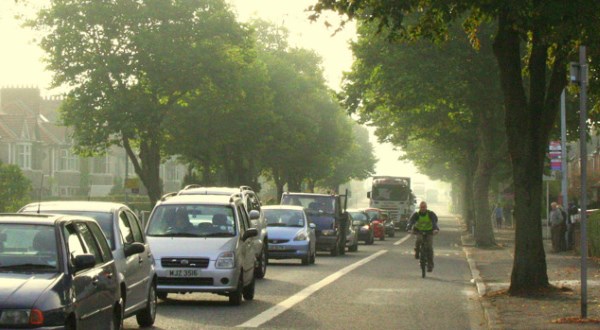
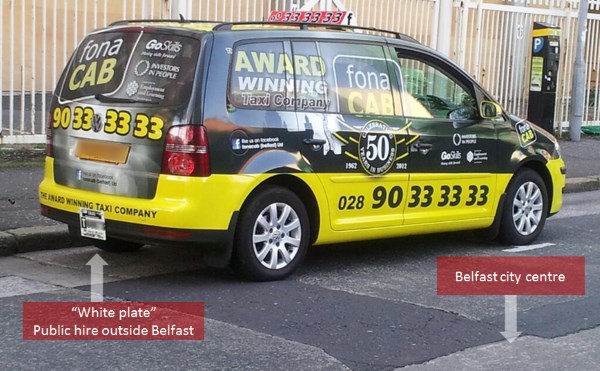


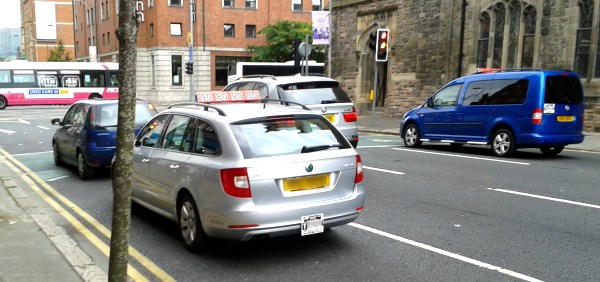
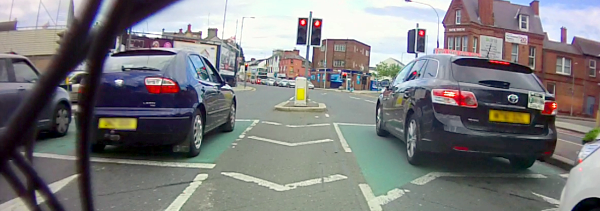

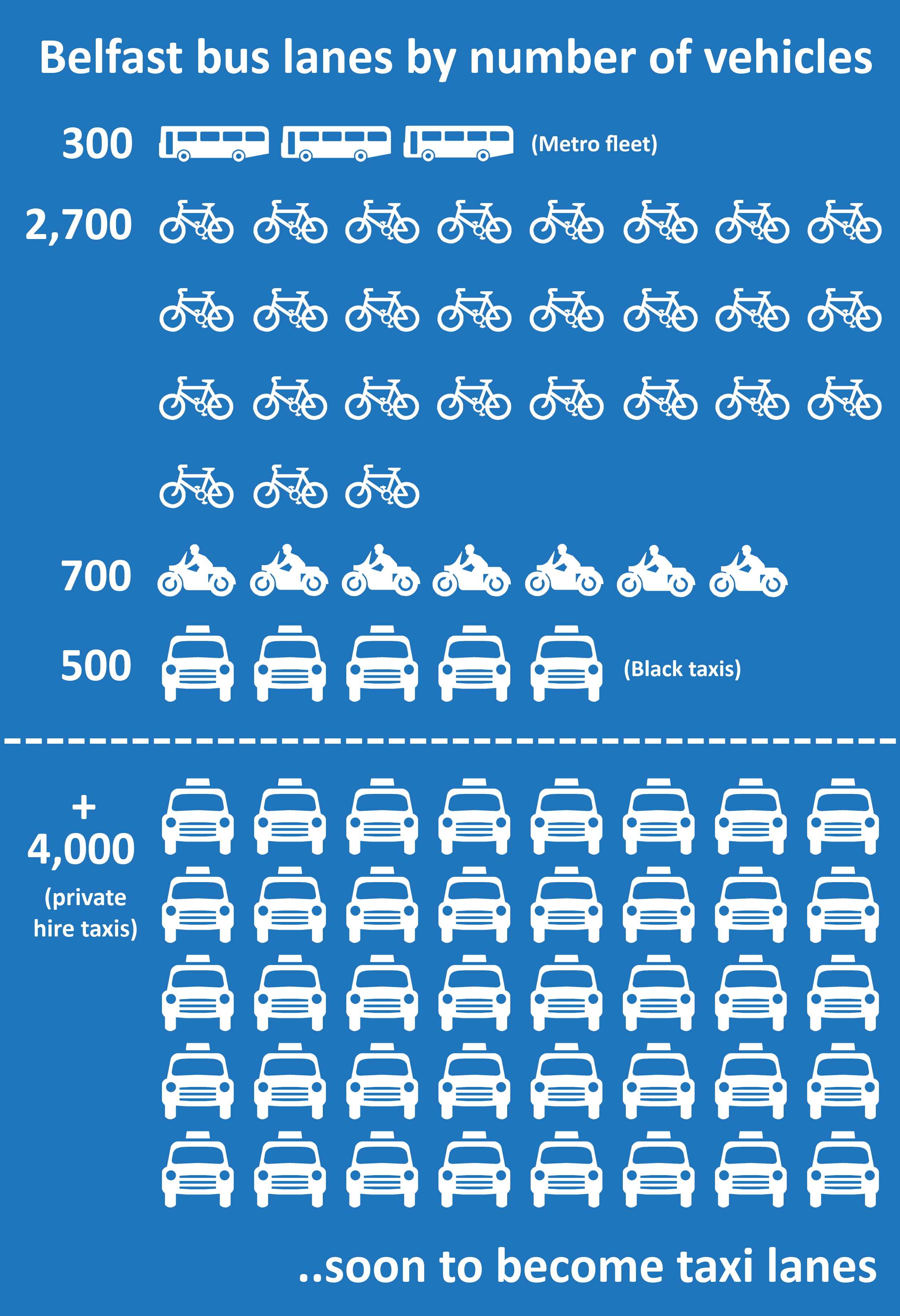
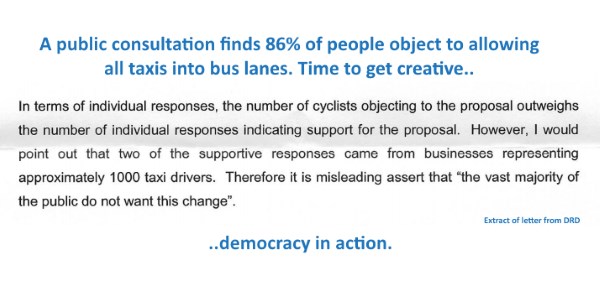

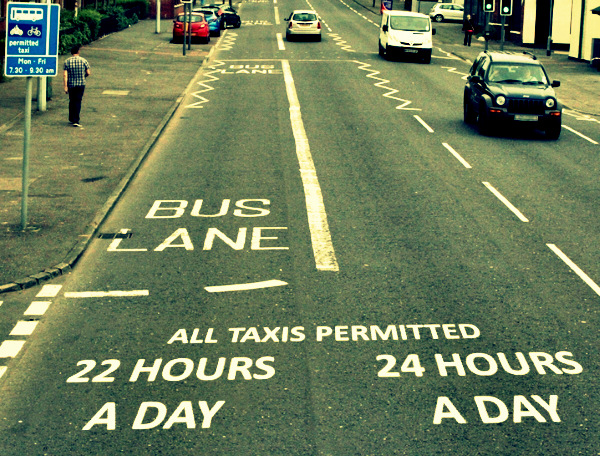

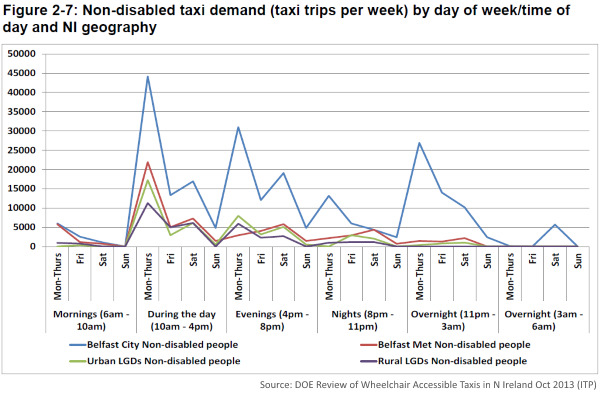
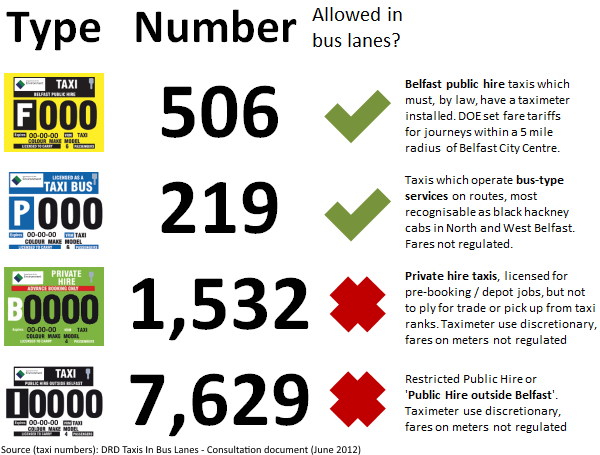
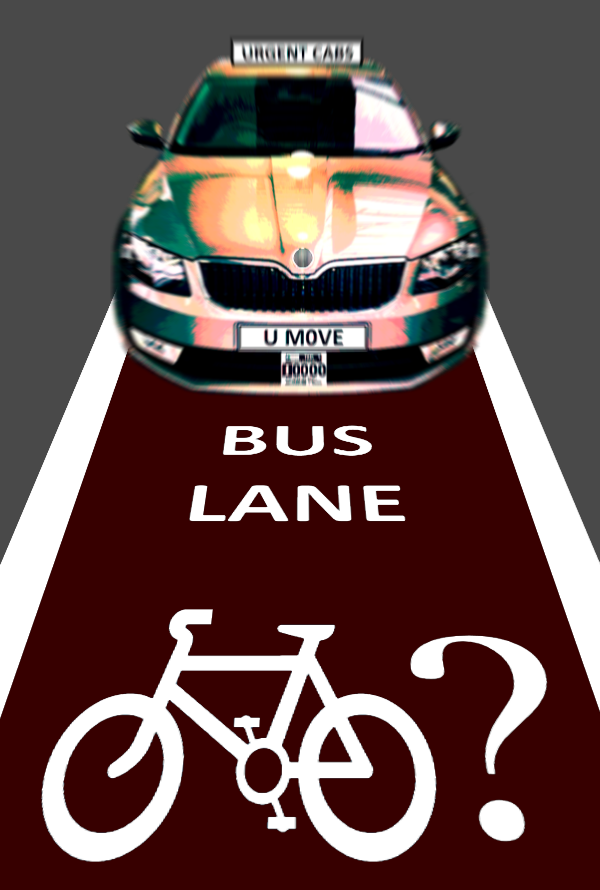
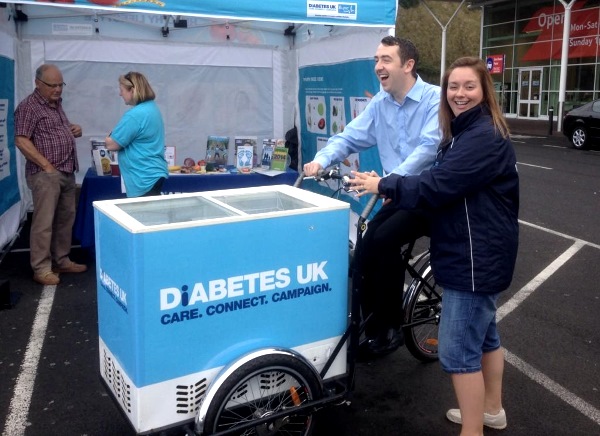
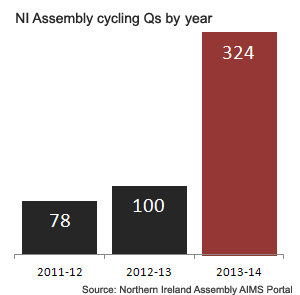 “What I like most about cycling is that it represents a solution to so many of our problems – an ever worsening state of public health, transport and congestion, mental health and stress, increasing fuel overheads. We have so much potential to realise in terms of cycling and there is a huge demand for it that we can release if we deal with safety and the perception of safety.
“What I like most about cycling is that it represents a solution to so many of our problems – an ever worsening state of public health, transport and congestion, mental health and stress, increasing fuel overheads. We have so much potential to realise in terms of cycling and there is a huge demand for it that we can release if we deal with safety and the perception of safety.